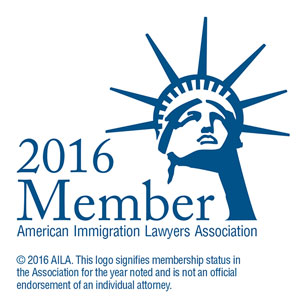The Vulnerable Returning Green Card Holder Under the Proposed Public Charge Rule
The notion of public charge has existed in our immigration laws since more than a century. The Trump administration’s new proposed public charge rule, however, interprets “is likely at any time to become a public charge” under INA 212(a)(4) in a way that would make it more difficult for people with lower incomes or less education, or who have received public benefits, to become permanent residents, obtain visas, or extend or change/adjust their nonimmigrant visa status. Consistent with other policy changes to restrict legal immigration by the Trump administration, the proposed public charge rule will reorder our immigration system without going through Congress in favor of affluent and younger immigrants.
The rule essentially applies to applicants for admission to the United States. These include people seeking admission at ports of entry, seeking an extension or change of status as well as those applying for adjustment of status. As a general matter, lawful permanent residents, or green card holders, are not considered applicants for admission and are not subject to the rule. However, certain returning lawful permanent residents may be considered applicants for admission and thus subject to the proposed rule.
Take the example of an elderly parent of a US citizen who got her green card a little over five years ago. She has the usual chronic health problems that a person of her age usually has such as a heart condition and diabetes. She does not speak English too well and has a basic high school education. She has been a homemaker all her life. She spent a little over six months in China to dispose valuable ancestral property, and then returned to the United States where she stays with her US citizen daughter, spouse and their minor children. She devotes her time in taking loving care of her grandchildren, and attending to all their needs, while their parents pursue high powered productive careers in the US. As a returning resident whose trip abroad was over 180 days, she could potentially be deemed likely to become a public charge when she travels back to the US.
Currently, those who are likely to become a burden on the government can already be excluded if they accept certain cash benefits. The proposed rule would greatly expand the definition of public benefits to include in kind benefits. The public benefits proposed to be designated in this rule include federal, state, local, or tribal cash assistance for income maintenance, Temporary Assistance for Needy Families (TANF), Supplemental Security Income (SSI), Medicaid (with limited exceptions for Medicaid benefits paid for an “emergency medical condition,” and for certain disability services related to education), Medicare Part D Low Income Subsidy, the Supplemental Nutrition Assistance Program (SNAP, or food stamps), institutionalization for long-term care at government expense, Section 8 Housing Choice Voucher Program, Section 8 Project-Based Rental Assistance, and public housing. The first three benefits listed above are cash benefits that are already covered under current policy.
The returning resident who receives any of the above public benefits could potentially be found to likely become a public charge at the airport. She would be deemed inadmissible and placed in removal proceedings by a Customs and Border Protection officer, and would have to contest the public charge determination before an Immigration Judge. Although the rule was initiated by the USCIS, it is still a DHS rule and the CBP is bound by it. The EOIR has not yet proposed a companion rule, but an IJ could potentially find the rule persuasive after CBP places the returning resident in removal proceedings.
Even if the elderly returning resident in our example is not receiving these benefits, she would still be at risk. The proposed rule would also require an immigrant to earn at least 125 percent of the federal poverty guidelines, and states that a household income of 250 percent of that level would be deemed “heavily positive.” Heavily weighted positive factors would include “significant income, assets, and resources.” Income and financial status would be considered as part of the “totality of the circumstances.” Heavily weighed negative factors include inability to demonstrate current or prospect of future employment, receipt of one or more public benefits, as described above, being diagnosed with a medical condition that is likely to require extensive medical treatment or institutionalization, or that the person is uninsured and does not have the ability to obtain private health insurance.
The proposed rule indicates that an applicant’s education and skills “are mandatory statutory factors that must be considered when determining whether an alien is likely to become a public charge in the future.” Our grandmother may not make it. In general, someone with educational credentials and skills “is more employable and less likely to become a public charge.” DHS, therefore, proposes that when considering this factor, the agency would consider “whether the alien has adequate education and skills to either obtain or maintain employment sufficient to avoid becoming a public charge, if authorized for employment,” to include consideration of the applicant’s history of employment, English proficiency, licenses, certifications, and academic degrees. Age would also be considered, with an age of less than 18 or greater than 61 requiring a demonstration of employment or sufficient household assets and resources. Negative considerations would include limited English proficiency and adverse physical or mental health. Some deemed inadmissible on public charge grounds might be allowed to pay for a public charge bond at the risk of losing it if they use any of the listed benefits.
The preamble to the proposed rule at footnote 176, and elsewhere at footnotes 66 and 72, ominously points out that lawful permanent residents would be considered applicants for admission under INA 101(a)(13)(C). Proposed 8 CFR 212.20 states that the provisions of the rule are applicable to “an applicant for admission or adjustment of status to lawful permanent resident.” Reproduced, below, is the text of INA 101(a)(13)(C):
“ An alien lawfully admitted for permanent residence in the United States shall not be regarded as seeking an admission into the United States for purposes of the immigration laws unless the alien –
- has abandoned or relinquished that status,
- has been absent from the United States for a continuous period in excess of 180 days,
- has engaged in illegal activity after having departed the United States,
- has departed from the United States while under legal process seeking removal of the alien from the United States, including removal proceedings under this Act and extradition proceedings,
- has committed an offense identified in section 212(a)(2), unless since such offense the alien has been granted relief under section 212(h) or 240A(a), or
- is attempting to enter at a time or place other than as designated by immigration officers or has not been admitted to the United States after inspection and authorization by an immigration officer.”
The returning permanent resident in our example who returns from a trip abroad that was more than 180 days would be treated as an applicant for admission under INA 101(a)(13)(C)(ii), and thus vulnerable to being considered inadmissible pursuant to INA 212(a)(4). INA 240(c)(2) requires an applicant for admission to demonstrate by “clear and convincing evidence” that he or she is “lawfully present in the US pursuant to a prior admission.” Indeed, INA 240(c)(2) places the burden on an applicant for admission to prove “clearly and beyond doubt” that he or she is not inadmissible. On the other hand, with respect to non-citizens being placed in removal proceedings, INA 240(c)(3), also enacted by IIRIRA, keeps the burden on the government to establish deportability by “clear and convincing” evidence.
If a returning resident is placed in removal proceedings, she should not accept that the burden of proof is on her to demonstrate that she is not inadmissible notwithstanding INA 240(c)(2). Rather, she must advocate that the burden is on the government to establish through clear and convincing evidence that she is inadmissible. If she is asked to fill out the humongous Form I-944, or a similar form that the CBP may issue, the government is placing the burden on the permanent resident, which would be in violation of her rights as a permanent resident.
It has historically been the case that when an applicant for admission has a colorable claim to lawful permanent resident status, the burden is on the government to show that he or she is not entitled to that status by clear, unequivocal and convincing evidence. This standard was established by the Supreme Court in Woodby v. INS, which held that the burden was on the government to prove by “clear, unequivocal, and convincing evidence” that the permanent should be deported from the United States. Subsequent to Woodby, in Landon v. Plasencia, the Supreme Court held that a returning resident be accorded due process in exclusion proceedings and that the Woodby standard be applied equally to a permanent resident in exclusion proceedings.
The Illegal Immigration Reform and Immigrant Responsibility Act of 1996 (“IIRIRA”) introduced the notion of “admission” in INA §101(a)(13)(C). “Admission” replaced the pre-IIRIRA “entry” doctrine as enunciated in Rosenberg v. Fleuti, 374 U.S. 449 (1963), which held that a permanent resident was not considered making an entry into the US if his or her departure was “brief, innocent or casual.” Under §101(a)(13)(C), an LPR shall not be regarded as seeking admission “unless” he or she meets six specific criteria, which include the permanent abandoning or relinquishing that status or having been absent for a continuous period in excess of 180 days. Fleuti has been partially restored in Vartelas v. Holder with respect to grounds of inadmissibility that got triggered prior to the enactment of IIRIRA. If Fleuti is someday completely restored, as has been argued in a prior blog, then the permanent resident will no longer be considered an applicant for admission.
Notwithstanding the introduction of INA 101(a)(13)(C), the Woodby standard still prevails and nothing in 101(a)(13(C) overrules it, and the burden of proof is still on the government. This was established in 2011 by the Board of Immigration Appeals in Matter of Rivens, which held:
“Given this historical practice and the absence of any evidence that Congress intended a different allocation of standard of proof to apply in removal cases arising under current section 101(a)(13)(C) of the Act, we hold that the respondent – whose lawful permanent resident status is uncontested – cannot be found removable under the section 212(a) grounds of inadmissibility unless the DHS first proves by clear and convincing evidence [footnote omitted] that he is to be regarded as an applicant for admission in this case by having “committed an offense identified in section 212(a)(2).”
What Rivens left open is that once the government has met its burden of establishing that the returning resident is an applicant for admission, whether the burden shifts to the applicant that she is not inadmissible or whether the burden still rests on the government. In Rivens, INA 101(a)(13)(C)(v) coincided with the ground of inadmissibility under INA 212(a)(2), a criminal ground, and therefore the BIA did not have to decide the question. With respect to a returning resident in our example, who has been deemed to be an applicant for admission under INA 101(a)(13)(C)(ii), the ground of inadmissibility will not coincide as it will be the public charge ground under INA 212(a)(4). Although INA §240(c)(2) places the burden on an applicant for admission to prove “clearly and beyond doubt” that he or she is not inadmissible, it ought to be argued that with respect to returning permanent residents, under Woodby, which has survived I01(a)(13)(C), the clear and convincing standard pursuant to INA 240(c)(3) ought to apply.
A returning resident who travels back to the US after a trip of more than 180 days, and is charged with inadmissibility under 212(a)(4) must assert, in removal proceedings, that the burden of proof is still on the government under Woodby. The government ought to be able to establish this through clear and convincing evidence. The permanent resident should thus be able to remain silent, not complete any form or questionnaire, and it would be on the government to prove that the person sought disqualifying benefits to establish that she is likely to become a public charge. The proposed rule appears to presume that the burden is on the returning resident that she is not inadmissible as a public charge, which clearly violates the Woodby standard and thus the due process right of the permanent resident.
It is strongly recommended that all those who are concerned about the proposed rule should send in comments by December 10, 2018. Although this blog focuses on the vulnerability of returning permanent residents, a good summary of the rule and how it will adversely impact applicants for visa benefits and permanent residency is available here, https://immigrationforum.org/article/public-charge-proposed-regulations-summary/. The proposed rule is going to be challenged on a number of grounds in federal court. The rule should also be challenged on the ground that it violates the due process rights of lawful permanent residents by shifting the burden of proof onto them contrary to what the Supreme Court held in Woodby v. INS and Landon v. Plasencia, and as affirmed more recently by the BIA in Matter of Rivens.




